
Volkswagen Taigo 2022 review

Introduction
The coupe-SUV is a trend started by the big German brands. BMW brought out the X5-derived X6, and Mercedes-Benz followed suit with the GLE Coupe before Audi jumped on that particular bandwagon with its Q8. Even Porsche created a more rakish version of the Cayenne to slake customers’ thirst for luxury SUVs with a slightly sportier shape.
Not only has that idea spread outside of Germany, but it has trickled down to smaller and less premium models. Renault has created a (stretched) coupe version of the Captur called the Arkana, and Skoda’s new electric SUV, the Enyaq, now also has a coupe form. By the same token, Volkswagen’s electric SUV, the ID.4, has spawned a more saloon-shaped variant called the ID.5.
And even lower down the VW range is this: the Taigo. Based on the popular T-Cross, it comes with a slanted rear window and a slightly lower roofline, designed to make it look a little more purposeful. VW says it has managed to achieve this sportier look without drastically affecting the T-Cross’ practicality credentials, but can that really be the case?
Select's rating score* - 3.6 / 5
At a Glance
On first sight, the Taigo looks simply like a T-Cross with a cut-down rear end, and there’s a degree of truth to that. But the Taigo is more than just the T-Cross’ cropped cousin, offering almost as much space inside while providing a more aggressively stanced body.
Inside, there’s a solid cabin that’s immaculately engineered, even if some of the materials feel a little on the cheap side. Nevertheless, the technology is clear and effective – particularly the digital instrument display – and the switchgear all feels remarkably solid to the touch.
Like most SUVs of this size, the Taigo is not available with all-wheel drive, but it does come with a selection of efficient petrol engines and a choice of gearboxes. There are more efficient manual options and more convenient automatic versions across the range, giving customers plenty of choice.
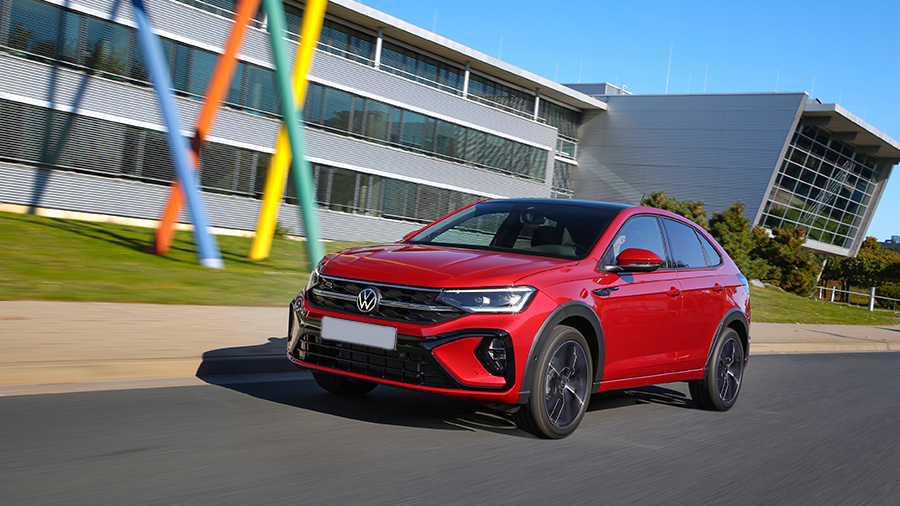
Key Features
The Taigo may be the latest in a growing crop of coupe-SUVs, but it’s competing with more than just a handful of less practical crossovers. It’s also up against some of the best small SUVs on the market, so it needs to be practical – and the massive boot will go some way to helping it compete. With only a fraction less space than the T-Cross on which it’s based, the Taigo manages to combine style and space.
It also adds quality to the mix, with traditional VW fit and finish to the cabin, as well as some classy technology. There’s a touchscreen infotainment system that may not look first-rate, but works sharply and solidly, and there’s a clear, easy-to-use digital instrument display. Combine that with some well engineered cabin fixtures, and the big boot, and you’ve got a dependable and capable family car.

Performance & Drive
There are three engines available for the Taigo, all of which run on petrol and drive the front wheels alone – those who want all-wheel drive will have to choose the larger T-Roc. The entry-level option is the 1.0-litre, three-cylinder, 95hp motor that comes with a five-speed manual gearbox as standard. It isn’t rapid – 0-62mph takes 11.1 seconds – but it’s quick enough for most customers.
Those who want a fraction more performance can opt for the 110hp version of that same engine, with its six-speed manual gearbox and 10.4-second 0-62mph sprint. Those who want to can swap the manual transmission for a seven-speed automatic, although that more or less wipes out the performance advantage.
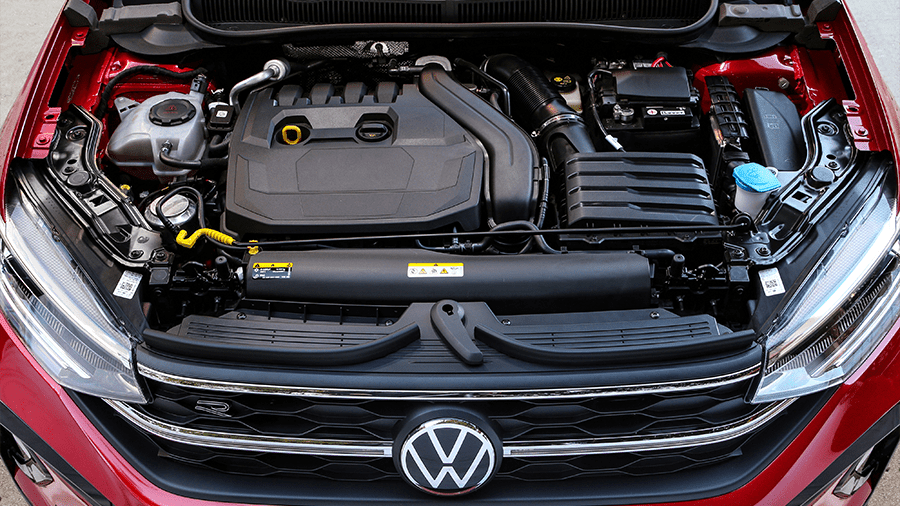
The final option in the Taigo range is the 1.5-litre, four-cylinder engine with 150hp. Unlike the 110hp option, it’s only offered with the seven-speed automatic gearbox, and it’s only available with the more upmarket Style and R-Line trims. It also gives you more performance, getting from a standstill to 62mph in a much more impressive 8.3 seconds.
Whichever engine you choose, however, the Taigo won’t feel especially sporty. The steering is too light for that and the suspension is a little soft, but the car is easy to manoeuvre and it feels safe on the road. And the soft suspension means the Taigo soaks up the bumps quite well, but it fidgets about a little on the motorway, giving it a slightly unsettled ride. Yet it doesn’t roll too much in corners, and that makes it smooth in fast corners.
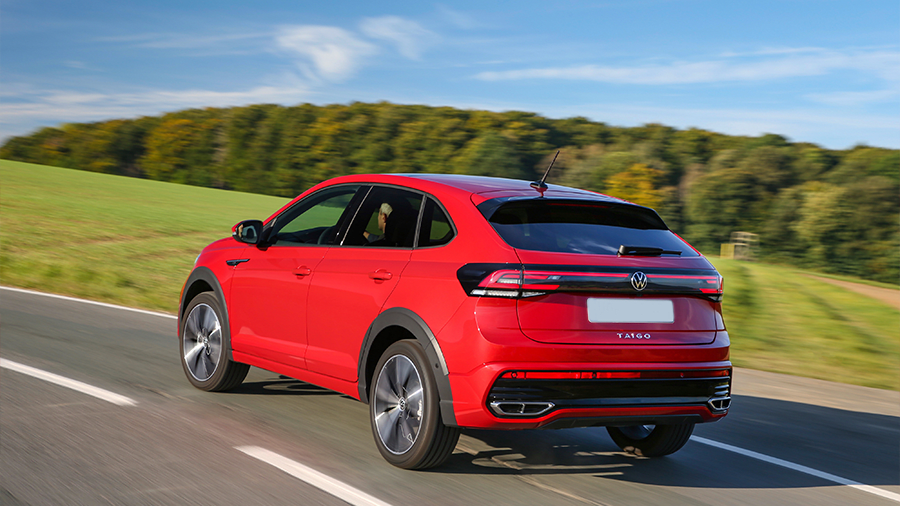
Running Costs & Emissions
There isn’t much difference between any of the Taigo’s engines when it comes to economy. The 95hp engine, which is the least powerful of the bunch, sounds as though it should be the most efficient option, yet for some reason it isn’t. The more powerful 110hp version of that same 1.0-litre engine is actually easier on fuel, achieving up to 52.3mpg on the official economy test.
That figure assumes you opt for the manual gearbox, which is a little more efficient than the seven-speed automatic. Opt for the auto transmission and you’ll face an economy penalty of around five percent.
With just three petrol engines on offer, however, the Taigo might not appeal to company car drivers as much as some of its rivals. The Renault Arkana, for example, is only available in low-emission hybrid form, which should keep the tax bills in check. As yet, there’s no such option for the VW.

Interior & Technology
The Taigo’s interior borrows much from the T-Cross, and in turn the Volkswagen Polo, which is both a blessing and a curse. For one thing, it means the car has impressive build quality, with all the interior panels and switches fitting together seamlessly. Material quality isn’t quite so impressive, but that’s a feature in small-ish cars with starting prices well below £25,000.
As with the Polo, VW has taken some interesting decisions, including the idea of fitting touch-sensitive climate control switchgear on the dashboard. It’s an unnecessarily clunky way of doing things without an obvious aesthetic upgrade. Conventional dials would have been a much better option.

The same can’t be said of the instrument display, which uses a configurable screen inspired by Audi’s Virtual Cockpit system. The Volkswagen version is nowhere near as clever, nor is it quite as customisable, but it’s very clear and easy to use, ensuring the high-resolution screen never gets too cluttered or fussy.
By the same token, the touchscreen display isn’t as fancy or as clever as the one available in the latest-generation Golf, but it’s better for that. Again, the display is clear and uncluttered, and though the resolution isn’t that brilliant and the graphics don’t feel as fresh as in some other VW models, the system works crisply and logically, which makes it very intuitive.

Practicality & Boot Space
Volkswagen says the Taigo is very nearly as practical as the T-Cross, and there are statistics to back that up. For starters, the Taigo’s boot measures 440 litres – a drop of just 15 litres compared with the T-Cross. More impressively, that’s about 60 litres more than you get in a VW Golf and just five litres less than you get in a VW T-Roc.
Of course, there’s more to practicality than boot space, and there the Taigo’s rakish shape comes into play. Boot space is measured up to the window line, and it’s above there that the body shape makes a difference. If you’re filling a car up to take it to the tip, the T-Cross is going to be more useful than the Taigo. It’s better for carrying taller, bulkier items, too.
Then there’s the cabin space, which is perfectly respectable and just about acceptable for carrying four tall adults. It’s a small car, so space isn’t what you’d call plentiful, but it isn’t bad at all. And there’s bags of storage space in there, with roomy bins and cubby holes dotted around the cabin to hide various bits and bobs.
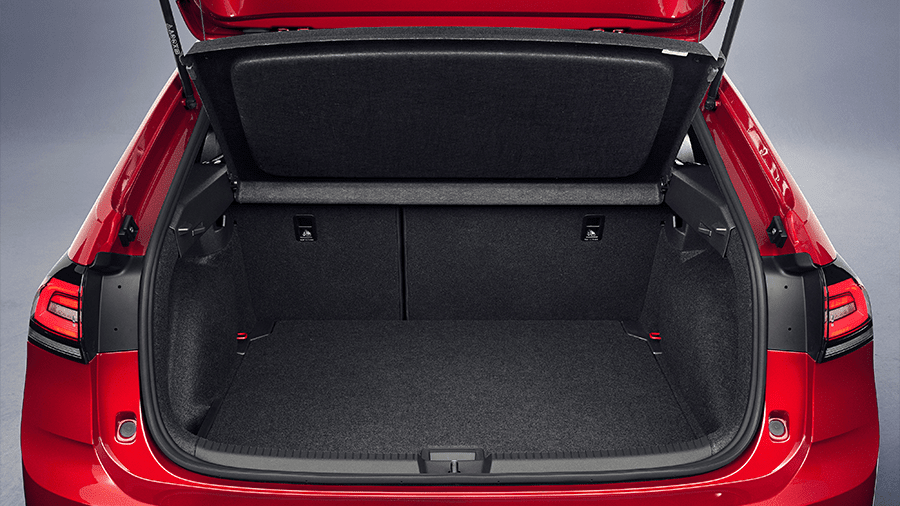
Safety
Because the Taigo shares much with the Volkswagen T-Cross, and therefore with the Volkswagen Polo, it doesn’t have its own Euro NCAP safety rating. Instead, it has inherited the Polo’s score, giving it a full five stars. Particularly strong is the adult occupant protection score, which hit an impressive 94%.
But the Taigo comes with lots of equipment designed to stop you needing that crash test score. As standard, the VW gets autonomous emergency braking that allows the car to brake automatically if the driver fails to respond to a hazard, and there’s a lane-keeping assistance system that works with the adaptive cruise control to help keep the car on track in a single lane. It’s hardly self-driving technology, but it’s a handy safety net on a long motorway drive.

Options
The Taigo range is not complicated, but it isn’t as simple as it looks at first glance. Rather than being a straightforward ladder, the three different trims form more of a Y-shaped hierarchy, with the basic Life model at the foot of the tree. That entry-level option comes with plenty of standard equipment, including a digital instrument display, alloy wheels and wireless phone charging, as well as the Apple CarPlay and Android Auto smartphone integration technology.
For those who want to move up the ladder, there’s a choice of routes. You can opt for the Style model, which comes with larger 17-inch alloy wheels and satellite navigation, as well as a bigger digital instrument display and two-zone climate control. Or you can go for the R-Line, which gets much the same equipment but adds some sporty bumpers and seat fabrics.
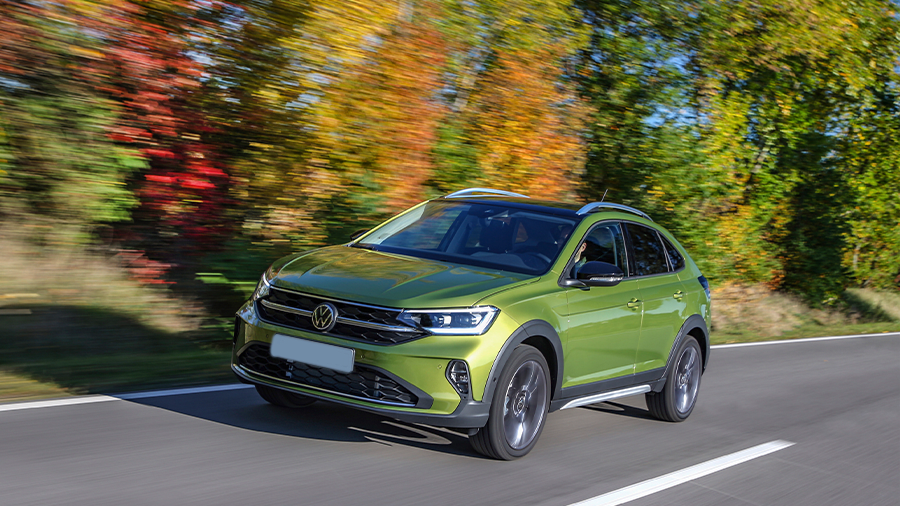
Customers also get a choice of some pretty outlandish colours, with a deep red, blue and a lurid green option all on the table. It gives the Taigo a little scope for customisation, and it’s refreshing to see a more vibrant colour palette on offer. Most colours are also available with a contrasting black roof and black door mirrors, upping the style ante.
Aside from the colours, customers can also choose from a range of optional extras, including heated front seats, a panoramic sunroof and a Beats Audio sound system. Other goodies on offer include a rear-view camera and keyless entry.

Rival Cars
As one of the trailblazers in the compact coupe-SUV market, the Taigo doesn’t have too many direct rivals. The stylish Renault Arkana is perhaps the closest alternative, but the Taigo isn’t just competing with the French hybrid. It’s also up against a raft of more conventional SUVs, including the T-Cross with which it shares so much. For some, the T-Cross’ more practical boot and already funky styling will be the clincher, but others will prefer the more radical look of the Taigo.
Similarly, the Taigo is also up against a raft of other compact SUVs, including the Seat Arona, Renault Captur and Kia Stonic, all of which major on build quality. There’s also the Hyundai Kona with its muscular looks and the Nissan Juke, with its funky image. Elsewhere, the Toyota Yaris Cross, Ford Puma and Vauxhall Mokka all offer strong competition.

Verdict & Next Steps
With the Taigo, Volkswagen has proved there’s no need for coupe-SUVs to fall short when it comes to practicality. The Taigo won’t be for everyone – not every customer will love the more rakish rear end – but it gives customers the chance to choose their body shape without having to worry about the knock-on effect on boot space. And there’s nothing wrong with choice.
Where to next?
View our latest Volkswagen Tiago lease deal - from just £219.59 per month inc VAT**
Looking for a great leasing deal? Check out our incredible range of Special Offers
New SUV? Read our latest Car Reviews and find the right model for you
Want to know more about leasing? Take a look at our comprehensive Leasing Guides
Interested in everything motoring? Why not catch up on all the latest Car Leasing News.
*Score based on Select’s unique meta score analysis, taking into account the UK’s top five leading independent car website reviews of the Volkswagen Tiago
**Correct as of 02/08/2022. Based on 9 months initial payment, 5,000 miles over a 48 month lease. Initial payment equivalent to 9 monthly payments or £1,976.31 Ts and Cs apply. Credit is subject to status.






















